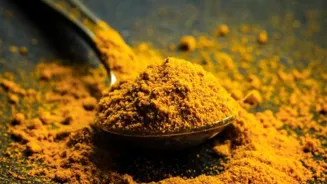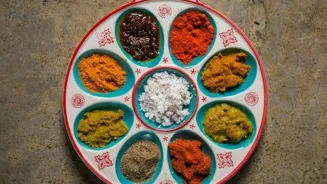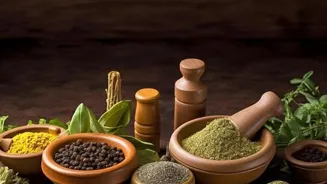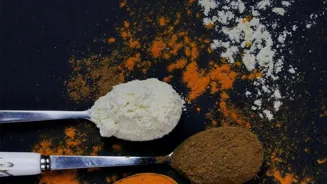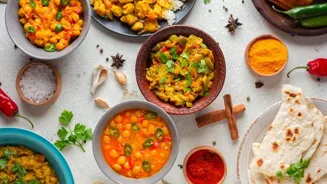Dive into the world of Indian spices! Unlock the secrets of 6 must-have spices for flavor-packed vegetarian cooking
Namaste, food lovers! Are you tired of the same old dishes and looking to add some zing
to your vegetarian cooking? Well, look no further! India is the land of spices, and even a few carefully chosen ones can take your cooking from "okay" to "wow!
" We're not talking about complicated recipes or fancy equipment – just a handful of essential spices that every home cook should have. Get ready to unlock a world of flavor!
This article will guide you through six must-have spices that will revolutionize your vegetarian dishes and bring the authentic taste of India to your dining table.
Turmeric adds flavor and health benefits to Indian cuisine
Turmeric, or haldi as we affectionately call it, is arguably one of the most important ingredients in Indian cooking. It's not just about the vibrant yellow colour it imparts; turmeric is also packed with health benefits.
Its subtly earthy and slightly bitter flavor is what adds a unique depth to lentil-based dishes like dal, vegetable curries, and even simple stir-fries.
Apart from flavour, turmeric is known for its anti-inflammatory properties, and has been used for centuries in Ayurvedic medicine to boost immunity . Remember to always bloom turmeric in hot oil or ghee at the beginning of your cooking as it unlocks its flavour.
A pinch of turmeric in warm milk before bed can help promote restful sleep. With its bold color and health-boosting properties, turmeric is a kitchen essential you will want to make sure you have.
Cumin: versatile spice with warm, earthy flavor for Indian dishes
Cumin, or jeera, is another workhorse in the Indian kitchen. These tiny seeds possess a warm, earthy flavour that deepens and intensifies with roasting. Cumin is available in both seed form and as a ground powder; both are useful to have on hand.
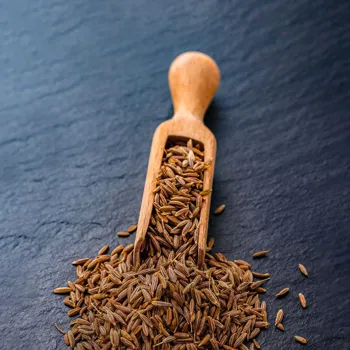
Use whole cumin seeds to temper oil at the start of a dish, allowing their aroma fills your kitchen and becomes the base note for the other flavours you add. Ground cumin is perfect for adding a subtle warmth to rubs for paneer, vegetable marinades, or sprinkling on top of raita (yogurt).
Cumin is also known for its digestive properties, and many people drink cumin-infused water after meals to aid digestion. If you're looking for a spice that is versatile, fragrant, and beneficial, cumin is a fantastic addition to your spice rack.
To take your cumin to the next level, try dry-roasting the seeds in a pan for few minutes before grinding.
Coriander's versatile flavors elevate dishes with seeds or leaves
Coriander, or dhania, is one of those spices whose flavour profile changes depending on whether you are using the seeds or the leaves. Coriander seeds have a citrusy, aromatic flavour that's both calming and enlivening. They are often used in spice blends like garam masala and curry powders.
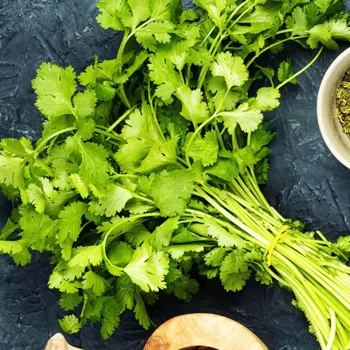
Ground coriander, on the other hand, is much milder and more subtle. Use it to add a bright, herbaceous note to vegetable dishes, soups, and chutneys. Then we have coriander leaves (cilantro), which is a very popular garnish in Indian cuisine.
For some it tastes fresh and zesty, and for others, it has a soapy taste. The herb adds a burst of freshness to any dish. Whether its seeds, ground coriander or herb, this spice adds a certain charm to dishes.
Indian chili powder adds spice levels to dishes, choose wisely
Chili powder, or mirchi, is the heart of Indian cuisine. The level of spice depends on the type of chili used to make the powder.
From mild Kashmiri chili powder that gives a beautiful red color without much heat, to the fiery hot bhut jolokia powder that will leave your taste buds tingling, there is a chili powder for every palate.
A pinch of chili powder can add a comforting warmth to your dal, while a larger amount can create a mouth-watering vegetable curry. Chili peppers themselves are also packed with vitamins and antioxidants. Just be careful of quantity – a little chili powder goes a long way!
Remember to store your chili powder in a cool, dark place to preserve its flavour and colour. Experiment with different types of chili powder to find the heat level that is right for you and transform your vegetarian dishes.
Garam masala: aromatic spice blend to elevate vegetarian dishes
Garam masala, which translates to "warming spice mixture," is not just one spice, but a blend of several aromatic spices. The blend may include cinnamon, cardamom,cloves, cumin, coriander, black peppercorns and more.

Each spice blend has its own characteristic flavour, depending on the ratio of the spices used. Garam masala is typically added towards the end of cooking to preserve its fragrance.
A sprinkle of garam masala over finished vegetable dishes, dals, or even rice can add a final touch of warmth and complexity. Some people make their own garam masala at home to control the blend of spices, but pre-made garam masala is also easily available in stores.
With its complex flavour profile, garam masala is the perfect way to add a touch of authentic Indian flavor to your vegetarian cooking, elevating the taste of your food.
Mustard seeds enhance Indian dishes with unique flavors
Mustard seeds, or rai, might be small, but they pack a powerful punch of flavour. Black mustard seeds are most common in Indian cooking and have a strong, peppery taste. They are usually used to temper oil at the beginning of a dish, where they pop and release their aroma.

The unique nutty flavour enhances it furthermore. Mustard seeds are especially delicious in South Indian dishes like sambar, where they add a tangy, pungent note. Yellow mustard seeds are much milder and have a somewhat more sour tone.
To release their flavour even further, soak them into water, or add vinegar/lemon juice. Whether you use black or yellow mustard seeds, they will add a unique twist to your vegetarian cooking.
Make sure you have these six staple spices is a great way to get your toes wet in the Indian food culinary.



